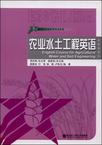农业水土工程英语
2007-4
黑龙江哈尔滨工程大学
胡家英
258
在21世纪初期,中国刚刚加入WTO组织并和国际接轨的新时期,国家教育部颁布的“大学英语教学大纲”把专业英语阅读列为必修课而纳入英语教学计划,强调通过大学四年不间断的英语教学使学生达到顺利阅读专业刊物的目的。根据这个精神,按照教育部新的学科和专业调整的目录,参考国内同类院校目前使用妁部分专业英语教材,由东北农业大学人文学院英语系和水利与建筑学院联合编写了《农业水土工程英语》教材,以满足部分高等院校本专业及相关专业(水利水电工程、农业水利工程水文水资源等)英语教学需要,以及供从事该专业的工程技术人员和管理人员学习专业英语参考。 本书内容涉及较为广泛,前半部分基本以水利专业各个学科及研究方向为主,属于基本知识部分;后半部分侧重于农业水土工程领域的最新研究动态及相关研究成果。主要内容包括:水文、水资源、水利工程施工与规划、水利工程经济、水工建筑物、水力发电、水土保持’水力机械、水环境、建筑材料与灌溉排水工程。 本书共分18个单元,每个单元由精读和泛读两篇文章组成。内容由浅入深,先广泛了解水利专业的基本情况,然后深入到农业水土工程领域的研究中。对于非本专业的人员也会有所帮助。为了加深对专业课文的理解,本书除了将所有精读课文作出了参考译文,及相应的专业词汇外,还对所有课文辅以习题。读者也可根据需要选择相关的文章进行阅读和训练。 全书由付强博士、卢铁光博士负责选编及翻译,杨雅砾、杨帆负责练习编排工作。承蒙黑龙江水利水电勘测设计研究院戴春盛教授审阅书稿;同时,东北农业大学水利与建筑学院的硕士研究生邢贞相、李慧娟、于国荣、姜宁、郭龙珠以及王秋梅、贾艳红老师参加了本书的部分工作,在此表示感谢! 由于编者水平有限,时间紧,任务重,书中难免存在不足和错误,恳请广大读者批评指正。
本书前半部分以水利专业各个学科及研究方向为主,后半部分侧重于农业水土工程领域的最新动态及相关研究成果。主要内容包括水文、水资源、水利工程施工与规划、水利工程经济、水工建筑物、水力发电、水土保持、水利机械、水环境、建筑材料与灌溉排水工程。本书可用作水利以及相关专业大学生的英语教材,也可作为相关科技工作者和管理人员学习参考。
Unit 1 Part A Water resources of the world Part B What causes floodingUnit 2 Part A Reservoirs and dams Part B Dams and development-an insight to the report of the world commission on damsUnit 3 Part A Hydroelectric power Part B Pumps and PumpingUnit 4 Part A Underground water Part B The runoff cycleUnit 5 Part A Water pollution and pollutants Part B U.S. Wastewater treatment--past and presentUnit 6 Part A Modem buildings and structural materials Part B BridgesUnit 7 Part A Soil erosion and soil conservation Part B Soil Conservation Issues on the United StatesUnit 8 Part A Engineering economy in waterresources planning(Ⅰ) Part B Engineering economy in waterresources planning(Ⅱ)Unit 9 Part A Hydrology Part B Current problems of stochastic hydrologyUnit 10 Part A Summary of EIA Part B Inadequacies in current methods for environmental assessmentUnit 11 Part A Irrigation methods Part B RDI--the new technique of water saving irrigation management in ChinaUnit 12 Part A Evaporation Part B Evaporation model of lake Qaroun as influenced by lake salinityUnit 13 Part A 21st Century's water saving in agriculture of Beijing Part B The research and application of plastic pipe in infiltration irrigationUnit 14 Part A Methods of applications of drip irrigation system Part B Drip irrigation technology and state western area development strategyUnit 15 Part A Water use efficiency of grain crops on irrigated fields in China Part B Cumulative function of water sensitivity index for rice and its variation with hydrological years.Unit 16 Part A Some topics on developing water-saving irrigation Part B Optimal use of irrigation water in the Jordan valley: a case studyUnit 17 Part A Irrigation canals Part B The SLGCAD software system on a new type of linked tetra-shaft & double-cantilever flat flap gateUnit 18 Part A A preliminary investigation on irrigation schedule under sprinkler irrigation Part B Study on expert system of irrigation forecast and decision making for water saving参考译文Key to exercises
Another critical flaw in the present generation of environmental impact assessment methods isthe failure to note that both facts and values enter into the analysis。Only the factual detenninationis‘objective.’ An impact assessment will be irrelevant if it ignores differenccs in the typcs 0fvalues held by various individuals or by the same individuals under different circumstances.Thevalues of different people may be weighted unequally.Facts and values should be delinea[ed Whenpossible,although they are sometimes difficult to separate.When values are explicit.sensitivityanalysis of alternative values is facilitated. The question of whose values matter is very important because the ultimate ajm 0f出eassessment is to select alternatives,devise policies’or suggest mitigation measures that maximizesocial welfare,and individuals are often the best judges of their own welfare.Also,the principlesof democratic government require representation of a broad set of values.Nonetheless.govenunentalso has a responsibility toward future generations and to maintain social equity.In some cases.particularly those in which these are major public health and safe questions.serious irreversiblc 0rpersistent impacts on environmental quality’or highly uncertain and complex scientific issues,expert opinions are most appropriate in setting values’but not exclusively so.Experts have theirown special interests and their values may not correspond with norms of social acceptability.Inmost cases,e participation of publics as well as experts is important in order to obtain。complcterepresentation of value structures’increase available information,improve accountability.rcduCcconflict in decision making’and smooth implementation.An open,participatory process is als0desirable to reduce possible abuses of power within the government.foster ideals of socialbelonging and self-determination,and educate the populace. Finally' many environmental assessments have been doomed to oblivion because of 10wdecision-making utility.Data collection and analysis should be matched to thc level and nccds 0fthe analysis;additional information has an expected value for benefits that can be Comparedto thecosts.Additional information is only desirable if it affects decision making;lengthY discussions ofirrelevant information call confuse decision makers.The goal of environmental assessment is tosimplify reality rather than duplicate it.The temporal and spatial resolution of the analysl.s shouldbe specific to the case. ……

还还来得及怎么看,挺专业的一本书,后面还有课文的翻译